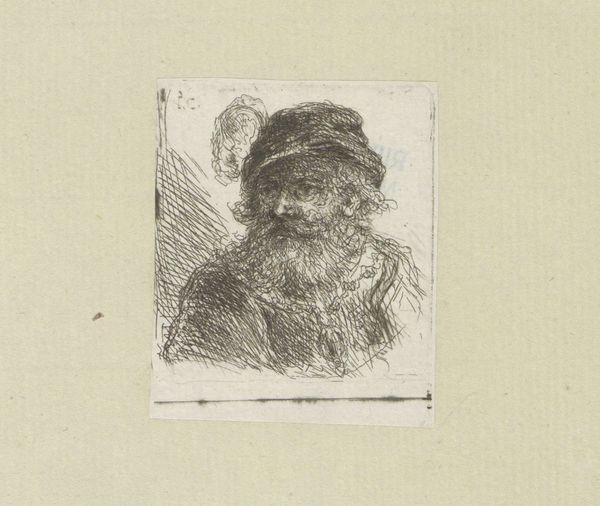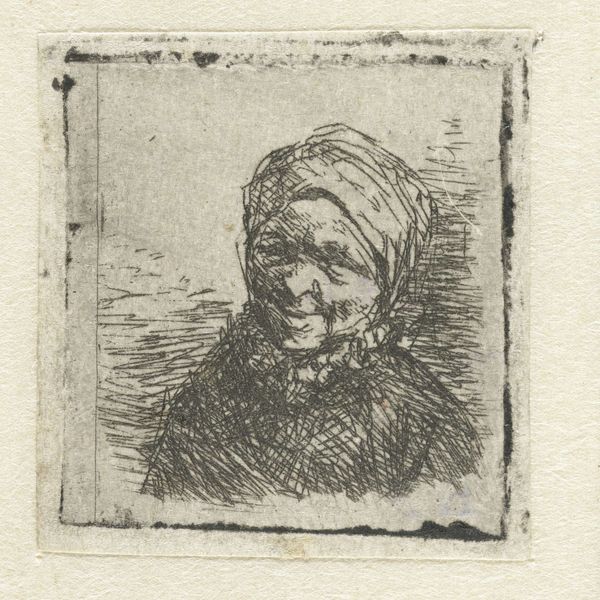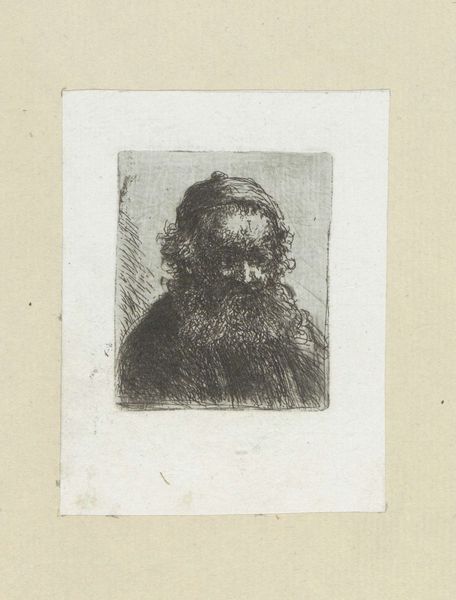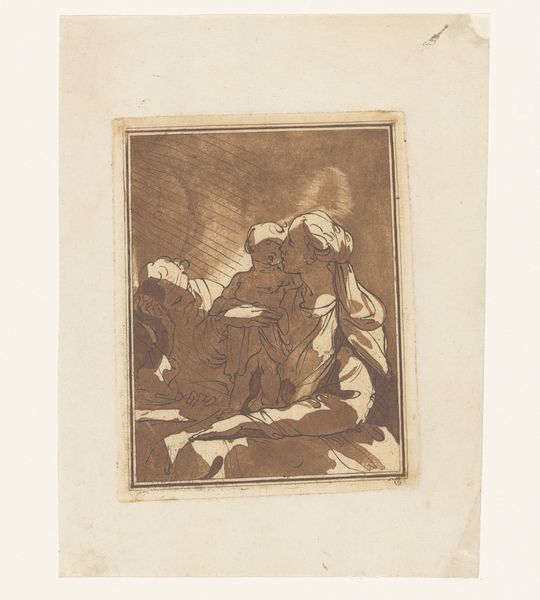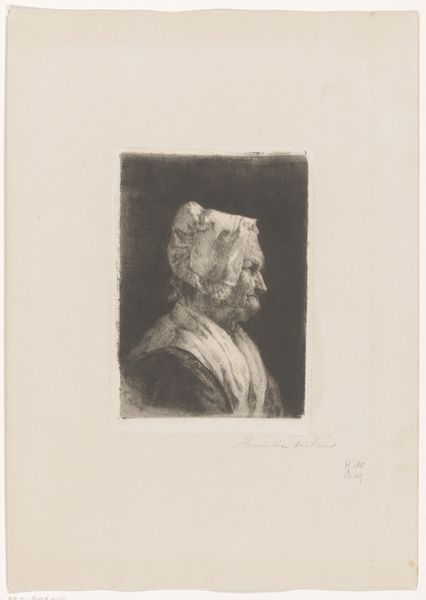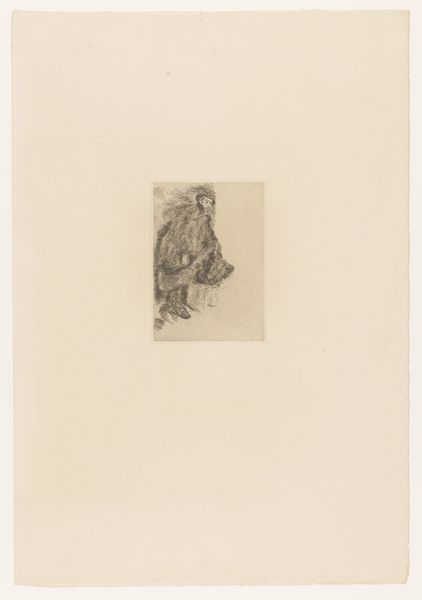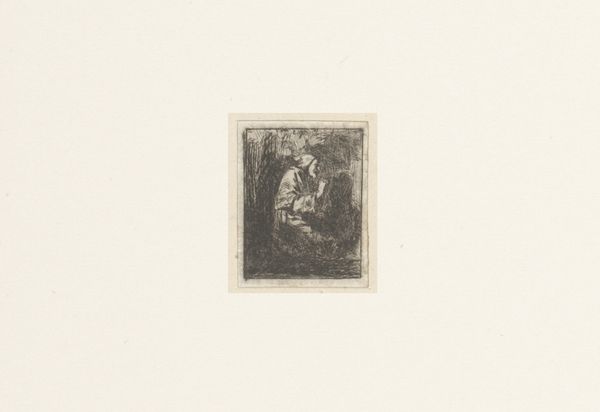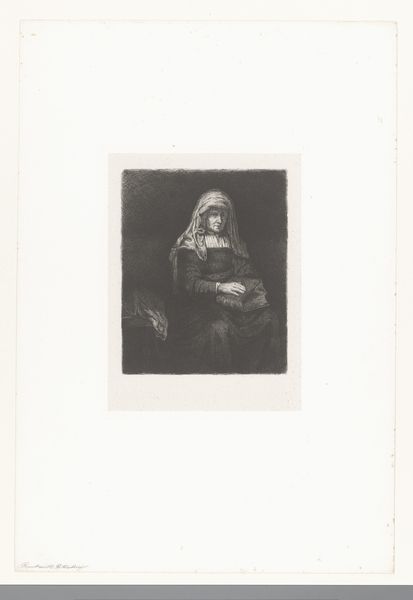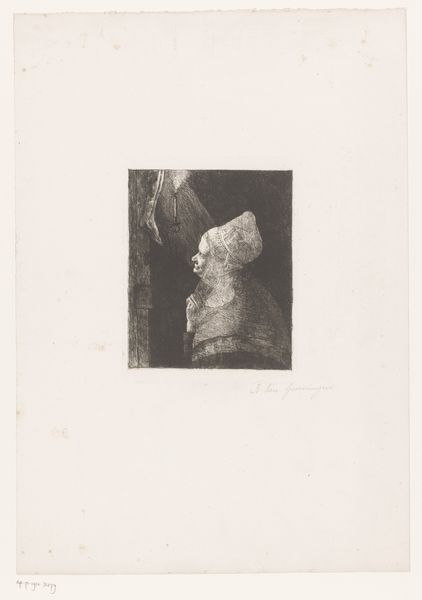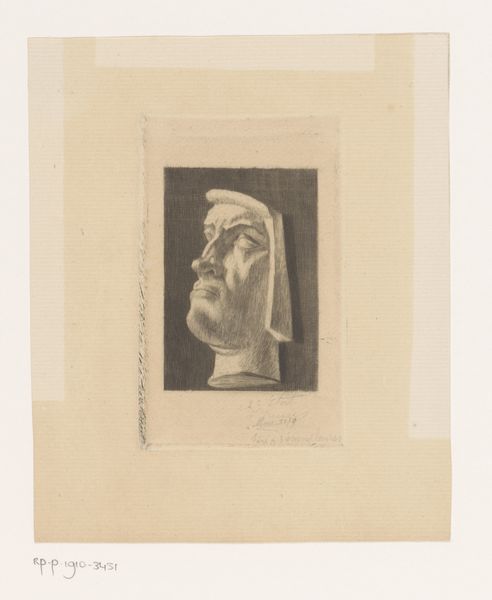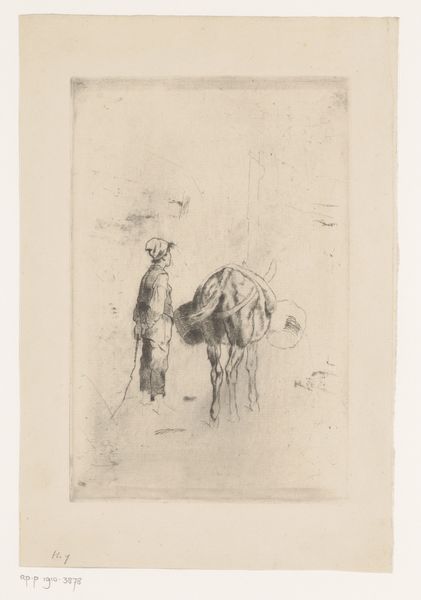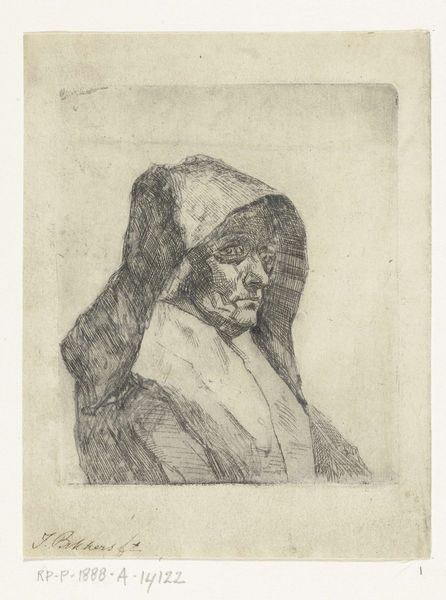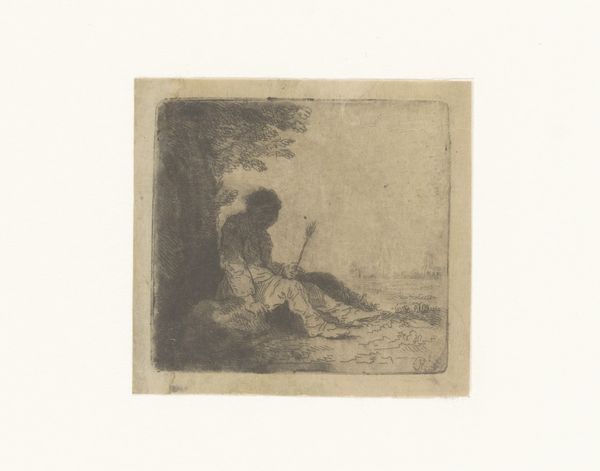
drawing, print, etching, ink, pencil
#
portrait
#
drawing
#
light pencil work
# print
#
etching
#
pencil sketch
#
ink
#
pencil drawing
#
pencil
Dimensions: height 57 mm, width 45 mm
Copyright: Rijks Museum: Open Domain
Curator: Looking at this etching, there's almost a raw, immediate quality. The lines seem spontaneously applied, conveying a certain... discomfort? Editor: Yes, I find a similar agitation in "Gapende man met hoge muts," created between 1778 and 1781 by Heinrich Nether. Its power comes not just from the line work itself but also from Nether’s choices about who to represent. He understood how portraiture can project specific types of status and authority. Curator: Right. The hat dominates—it’s absurdly tall, practically comical, yet also imposing. And the "gapende man," the yawning man, is such an unexpected subject for portraiture of the period. One wonders about the symbols at play, given his apparent exhaustion or perhaps boredom. Are we seeing a subtle critique of the elite? Editor: Perhaps. Or Nether might be tapping into a well-established tradition. Throughout the 18th century, artists created portrait prints, like this one rendered with etching, for an expanding middle class, a way to possess likenesses cheaply, not just of the famous but of interesting types. These images served public roles, teaching moral lessons or offering satirical commentary, becoming widely circulating commentaries in urban centers. Curator: And that etching—it gives a texture that softens what might otherwise be a severe image. I wonder about the model himself, his story outside the artwork. Did Nether aim to simply capture this momentary state, or were deeper commentaries embedded in such casual depictions of individuals? Editor: We can only speculate so much based on limited resources but given print’s rapid development for spreading new ideas in art and commerce, what this seemingly minor work lacks in artistic polish, it gains through popular potential. Consider then, the public for Nether’s "Gapende Man;" each print, a document offering another unique cultural viewpoint. Curator: The layers of meaning really deepen as we trace its social life as a multiple – this artwork speaks not just to its immediate impression but beyond as well. Editor: Indeed, by studying its artistic creation through a public lens we gather its lasting significance today.
Comments
No comments
Be the first to comment and join the conversation on the ultimate creative platform.
